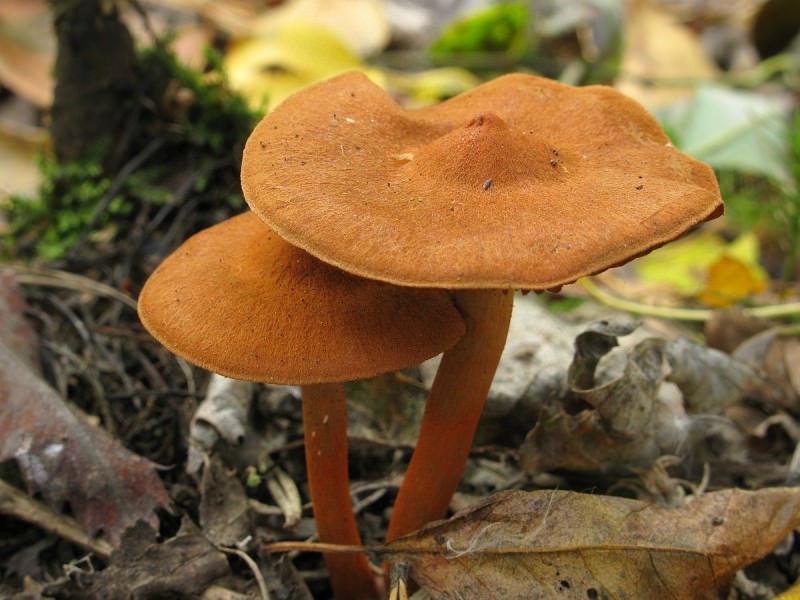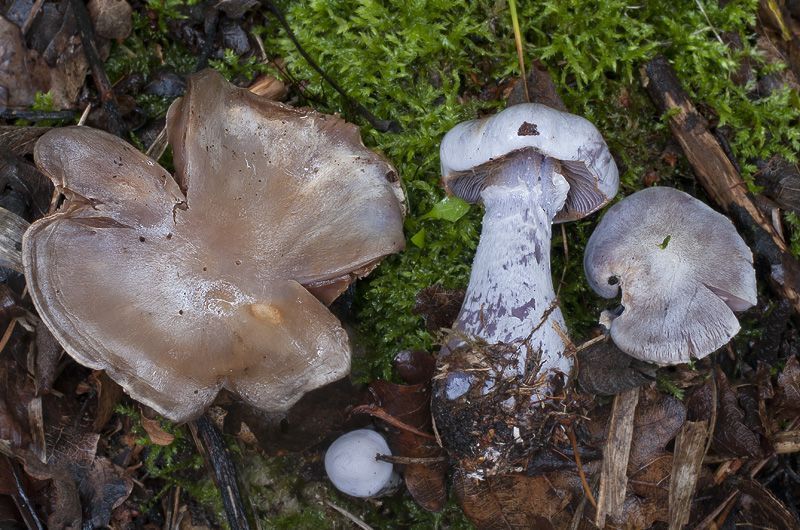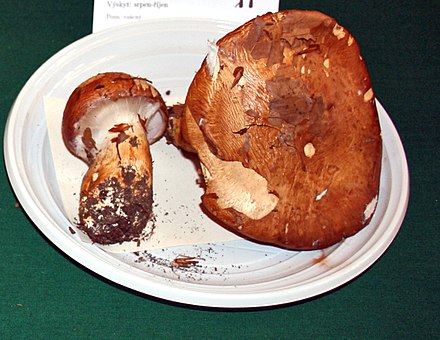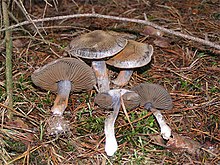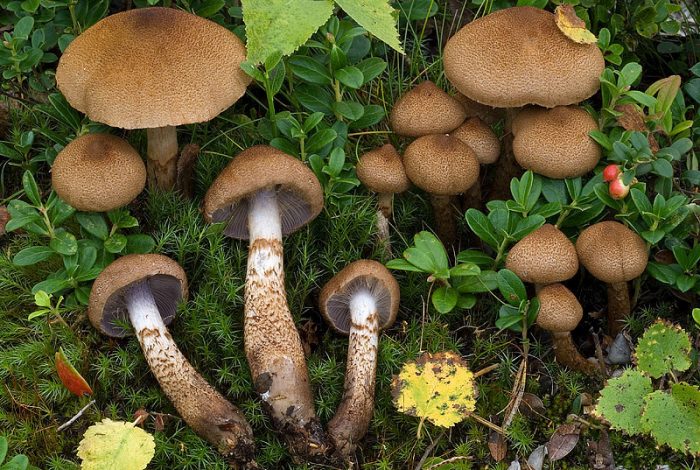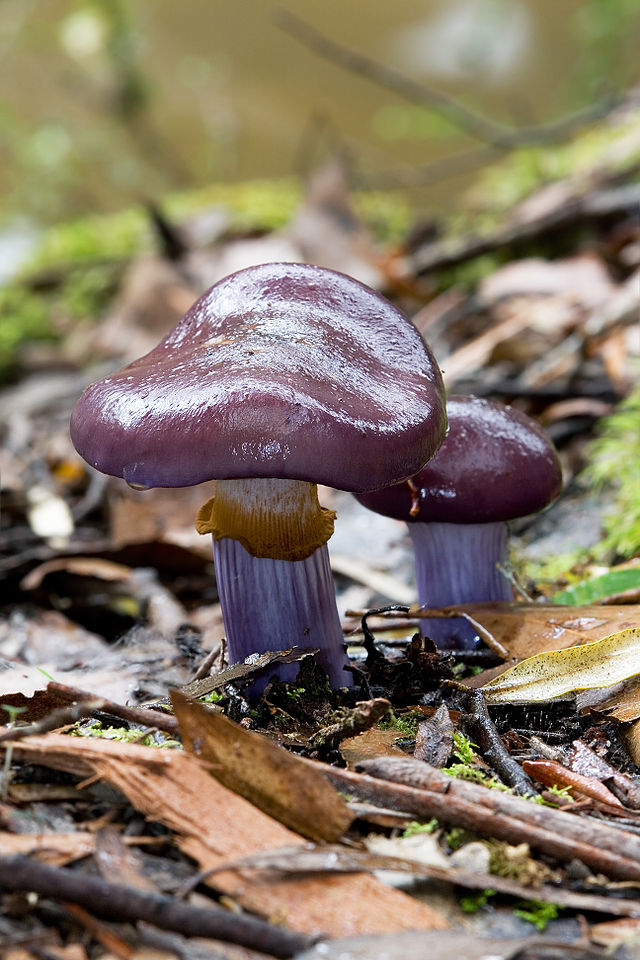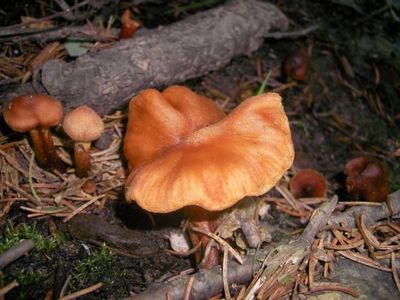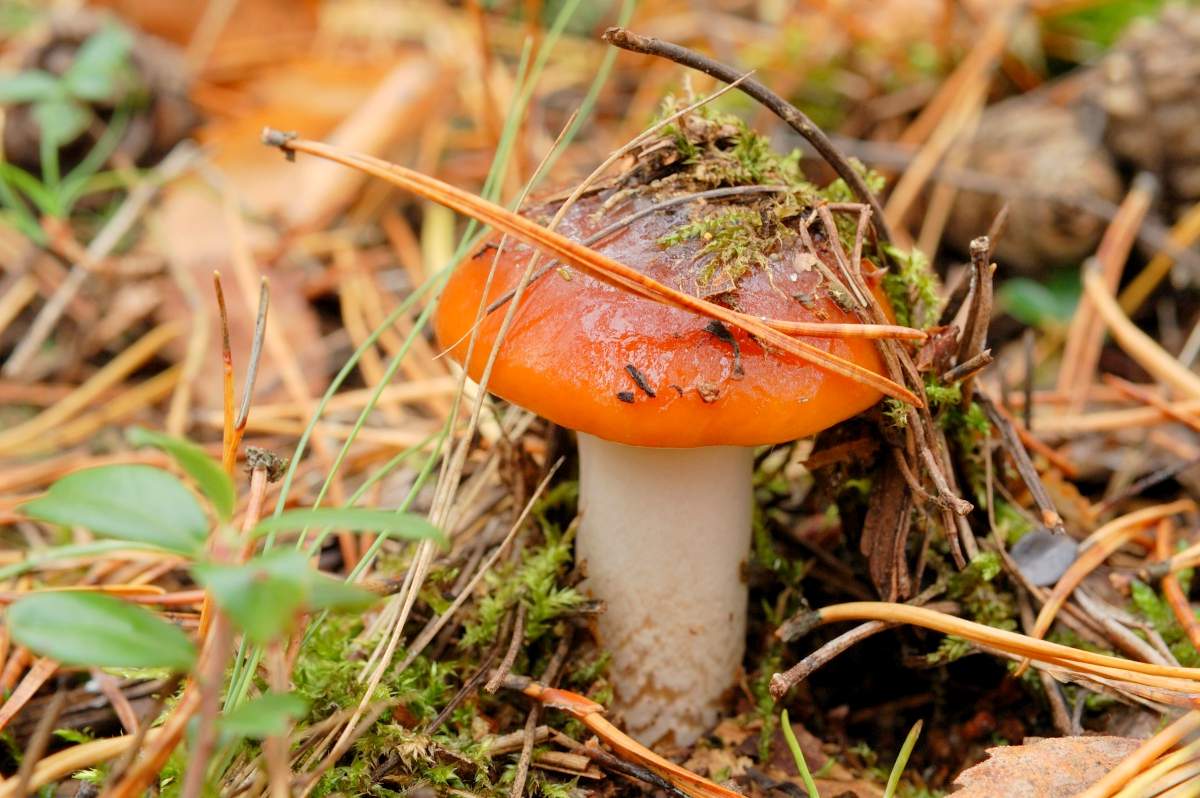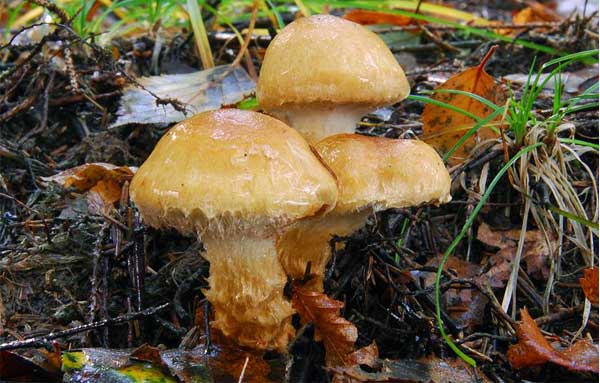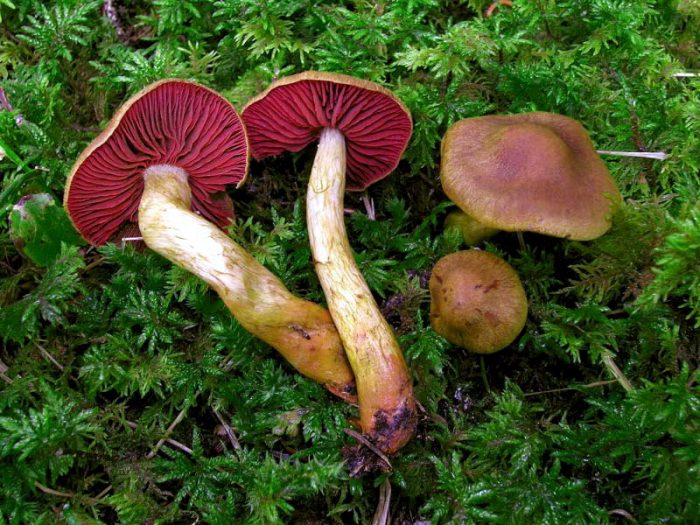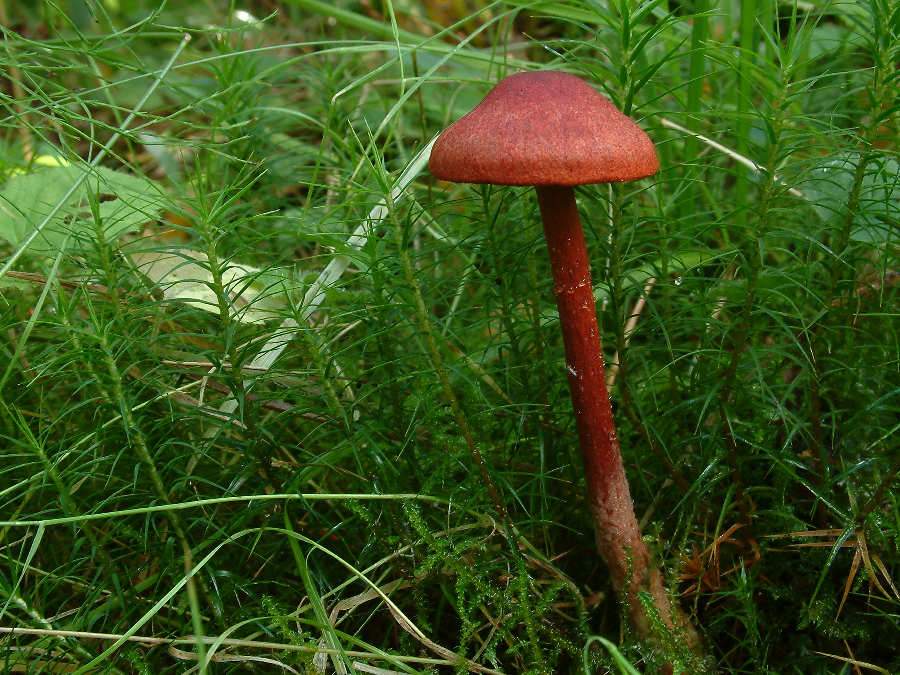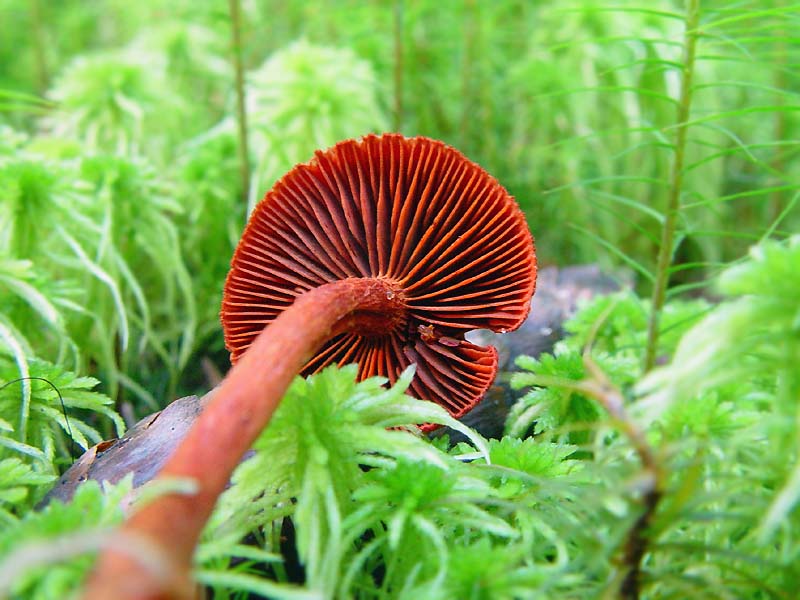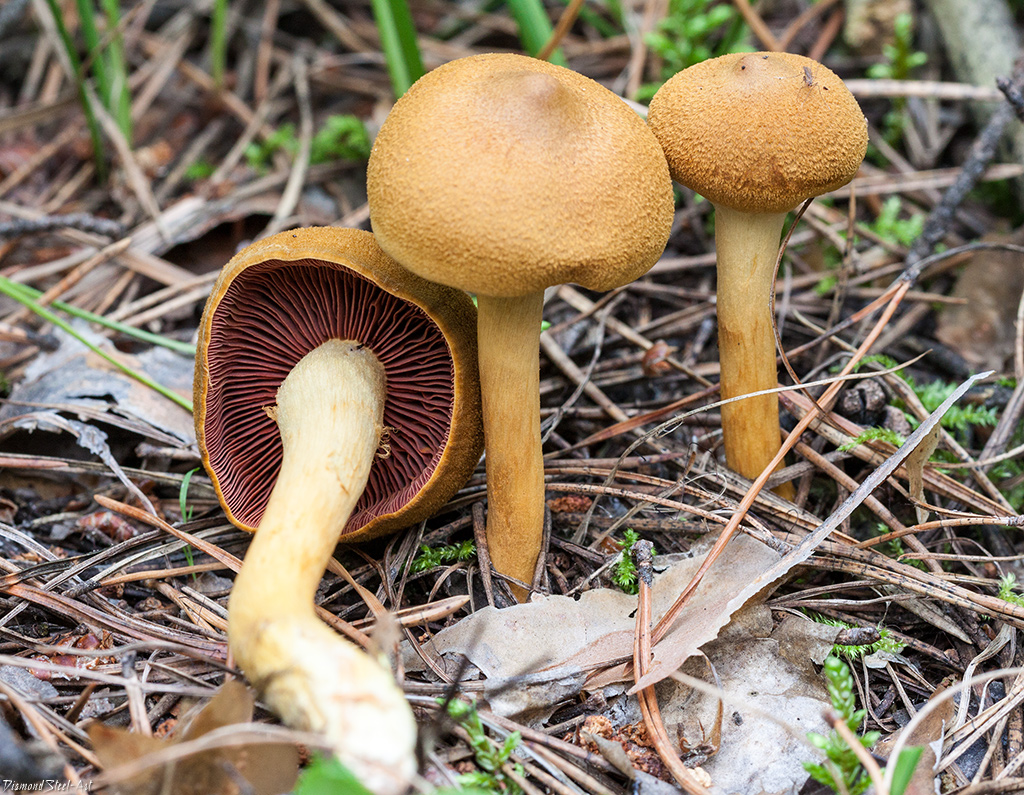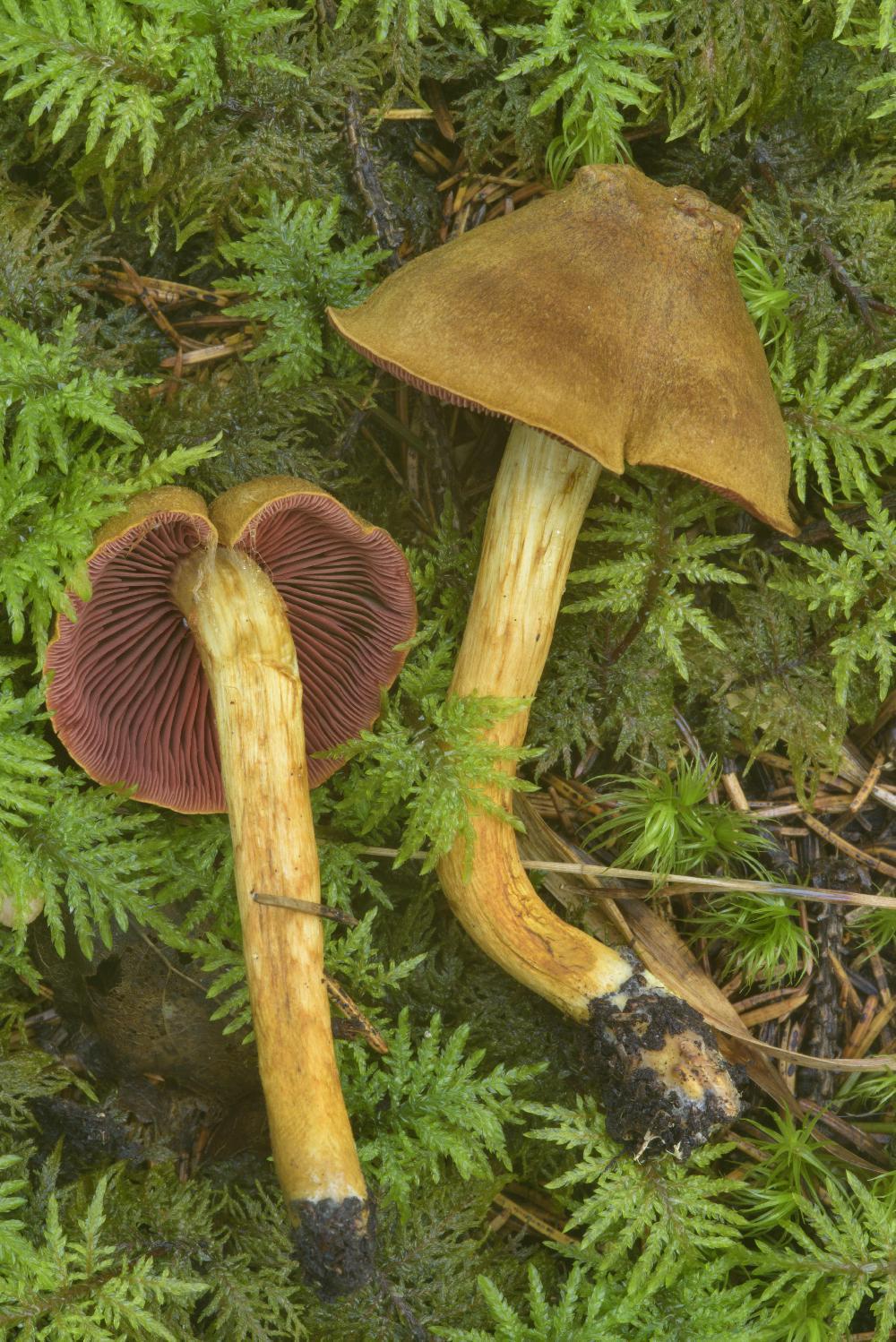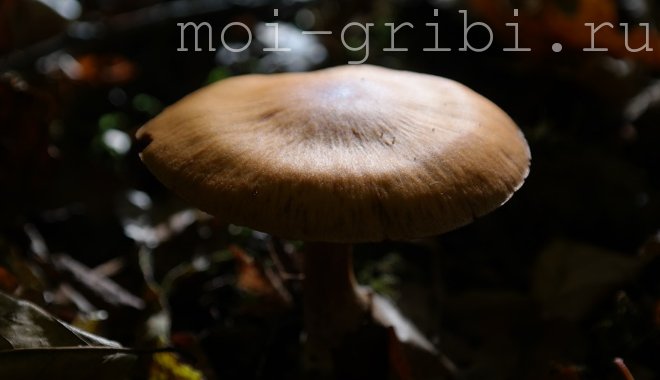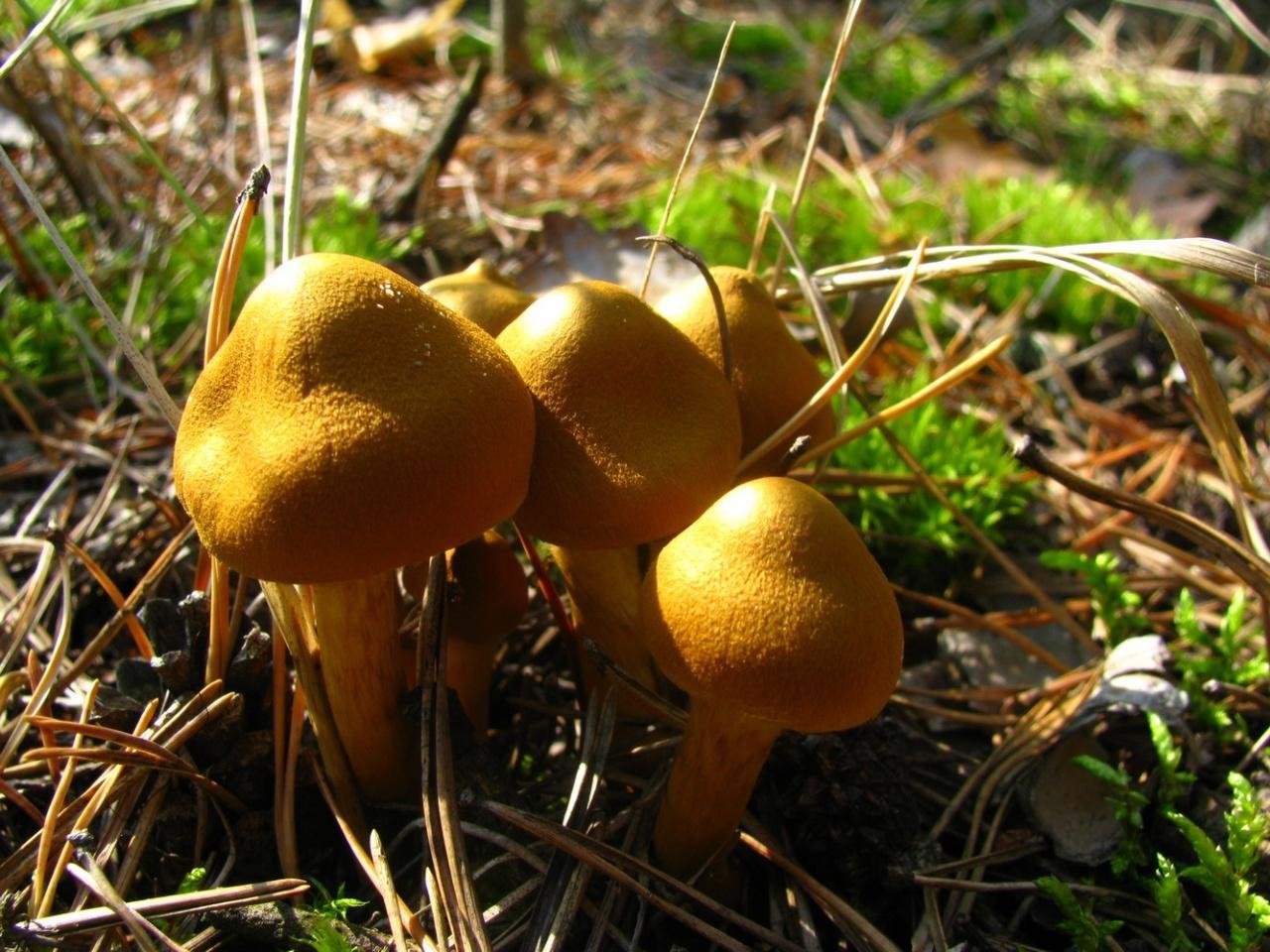Description
Lamellar cap mushroom with a cobweb blanket. The cap of adult mushrooms reaches 2-8 cm in diameter, in young mushrooms it is hemispherical to conical, then opening to flat, in the center with a noticeable tubercle. The surface is fibrous or tomentose-fibrous, olive-yellow-brown to ocher-brown, in old mushrooms it is red-brown. The plates of the hymenophore, adhered to the peduncle, are frequent, in young mushrooms richly blood-red, then, when the spores mature, rusty-red-brown to yellow-brown.
Cortina is the color of the caps of young mushrooms.
The flesh is yellowish-brown or yellowish-buffy, often with an olive tint in the cap, with an unpleasant odor, described as sparse or iodoform, bitter or insipid in taste.
The stem reaches 4-10 cm in length and 0.4-1 cm in thickness, cylindrical or widening downward, with a silky-fibrous yellow-ocher surface, with remnants of cortina, covered with rusty-brown spores in adult fungi. The mycelium at the base of the stalk is yellow.
Rusty brown spore print. Spores 5-8 × 3.5-6 microns, elliptical, with an uneven surface. Cheilocystids are clavate.
Similar species
The red-plate webcap is easily distinguished from other cobwebs by the yellow-brown surface of the cap and rich blood-red plates. The closest species is Cinnamon Spiderweb (Cortinarius cinnamomeus (L.) Fr., 1838), characterized by lighter reddish-pink plates.
Blood-reddish webcap, Cortinarius semisanguineus
Hat: Bell-shaped in young mushrooms, with age it very quickly acquires a “half-open” shape (3-7 cm in diameter) with a characteristic central tubercle, in which it stays until very old age, sometimes only cracking at the edges. The color is rather changeable, dim: brown-olive, red-brown. The surface is dry, leathery, velvety. The flesh of the cap is thin, firm, of the same indeterminate color as the cap, although it is lighter in color. Smell and taste are not pronounced.
Hymenophore: The plates are quite frequent, adherent, with a characteristic blood-red color (which, however, smoothes out with age, as the spores mature).
Spore powder: Rusty brown.
Leg: 4-8 cm high, lighter than the cap, especially in the lower part, often curved, hollow, covered with not very noticeable remnants of a spider web. The surface is velvety and dry.
Spreading: It occurs throughout autumn (often from mid-August to late September) in coniferous and mixed forests, forming mycorrhiza, most likely, with pine (according to other sources, with spruce).
Similar species: There are more than enough similar cobwebs belonging to the subgenus Dermocybe (“skinheads”); a close blood-red spider web, Cortinarius sanguineus, is distinguished by a red cap, like young plates.
Edibility: It is not really known whether the mushroom is poisonous or simply inedible - apparently, there are no volunteers to check.
Author's notes: The blood-reddish webcap immediately attracts attention with its Russian name. Cortinarius semisanguineus can be translated in different ways, but probably the most awkward translation has become generally accepted.
However, words are words, and a cobweb is a cobweb. This species differs slightly from the beautiful, bright and rare blood-red webcap; it is precisely this beauty and brightness that is different. But under the unattractive gray-brown sign lurks all the same rage and pride as that of a red, not reddish, fellow. And from the blood-reddish cobwebs, dye for wool is obtained. If you can imagine sheep breeders wandering through the forest looking for special cobwebs for paint, imagine it yourself. It's hard for me.
The awkward name Cortinarius semisanguineus, it would seem, hints to us at some "half-heartedness", the incompleteness of the mushroom - well, what, in fact, should mean "half-blood red"? The hint, as we can see in this picture, is completely irrelevant: the mushrooms look quite complete, if not completely. They are quite good mushrooms, previously they did not even want to write them down in cobwebs, defining them in a separate genus - Dermocybe (however, there is again some unnecessary polysemanticism here).
The most recognizable "detail" of this webcap is the bright red plates, which do not lose their saturation from the very end. Thus, Cortinarius semisanguineus is a recognizable, beautiful mushroom that few people need.
Evening dawn webcap. Until the very cold weather, Cortinarius semisanguineus retains its neat shape and color, which compares favorably with other late mushrooms, which often lose face after the first frost.
The rich bright color of the plates is the best proof that the fungus belongs to the species Cortinarius semisanguineus, the best and, perhaps, the only one. But in comparison with other webbeds, it must be admitted, and this is very good.
Description of the appearance of the red-plate spider web.
This is a cap-pedunculate lamellar mushroom with a cobweb blanket. The cap at a young age can be hemispherical or conical, later it opens and becomes flat, and a tubercle is noticeable in its center. Its diameter is 2-8 centimeters. Young specimens are covered with a veil in the color of the cap.

The surface of the cap of the red-lamellar spider web is felt-fibrous. It is olive brown, olive yellow or ocher brown in color, and turns reddish brown in old age.
Under the cap there are plates adhered with a tooth. At a young age, the color of the plates is rich, bloody, but when the spores mature, the plates turn rusty brown or yellow-brown. The spores are elliptical. They have an uneven surface. The color of the spore powder is rusty brown.
The pulp has an unpleasant odor, which is described as the smell of iodoform or radish. It tastes bland or bitter. The color of the pulp is yellow-ocher or yellow-brown.

The leg is cylindrical or widened at the bottom. Its length is 4-10 centimeters, and the girth is 0.4-1 centimeters. The surface of the leg is silky fibrous. Remnants of the cortina are visible on the stem. The color of the leg is yellow-ocher, and in adult specimens, its surface is covered with spores and becomes rusty-brown. The mycelium at the bottom of the stalk is yellow.
Places of growth of red-lamellar spiderwebs.
This type of mushroom is widespread in the boreal zone of Eurasia, as well as North America. Red-plate webcaps prefer to settle on sandy soil. They mainly grow in conifers, and are rare in deciduous forests.

Evaluation of the taste of red-plate spiderwebs.
This species is considered inedible due to its unpleasant taste. Although many related species are poisonous, the red-leaf spider web does not contain poisonous substances. Cases of poisoning with these mushrooms have not been recorded.

Distinctive features of the red-plate spider web.
This species can be easily recognized due to the yellow-brown color of the cap and the plates of a rich blood red color.

Related species.
The crimson webcap is a conditionally edible species. His hat is convex, then it becomes flat. Its surface is sticky. The color of the cap can be red-brown or olive-brown. The pulp is fibrous, has a bluish tint, and becomes purple on the cut. Her aroma is pleasant, but there is no particular taste. The leg is very dense, purple in color.
Crimson cobwebs bear fruit in autumn. This type of cobweb is found in deciduous, mixed forests and conifers.

Large webcap - an edible member of the family. The shape of its cap is convex or convex-outstretched. Her color is gray-purple. The pulp at a young age is purple, but then turns white. It has no characteristic smell and taste.The stem is central, white or light purple, and brown at the base.
These edible cobwebs grow in deciduous forests and conifers. Often found at the edges. They live on sandy soils. This type is common in many European countries. Big cobwebs are collected in September.

